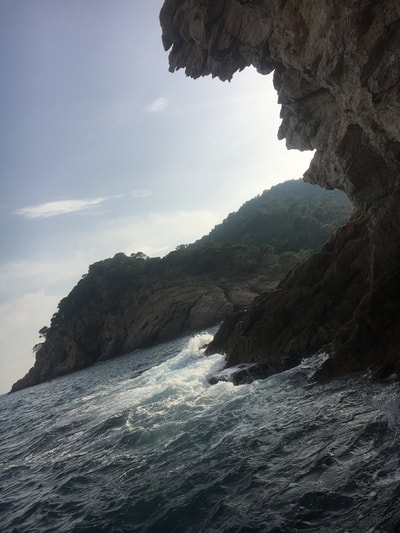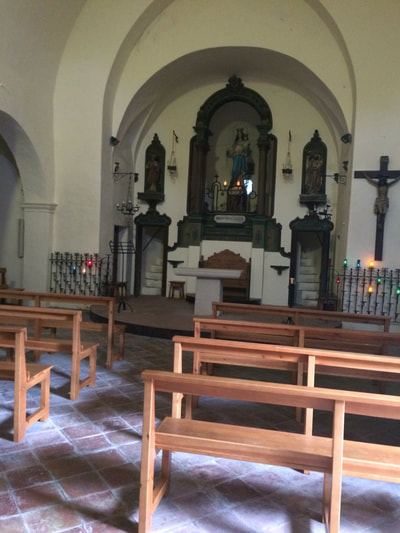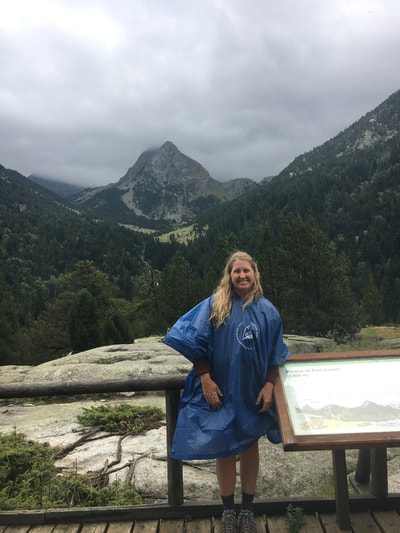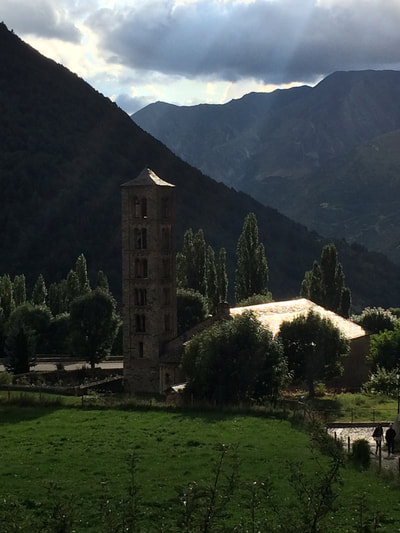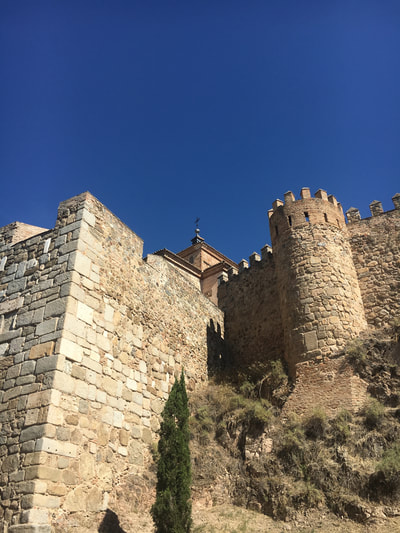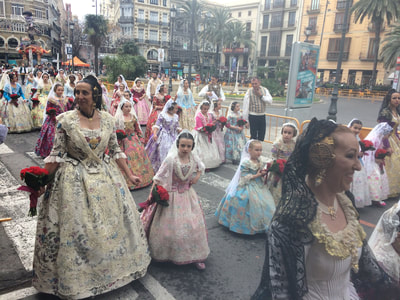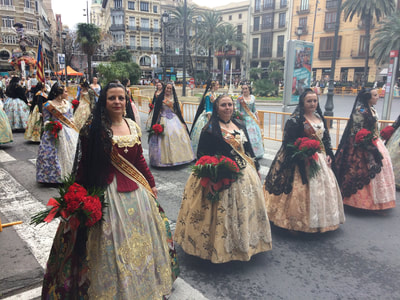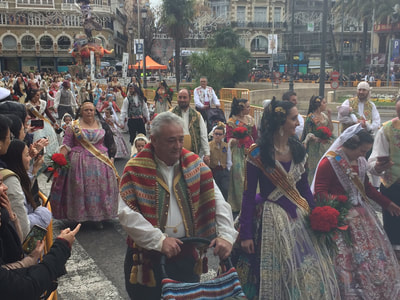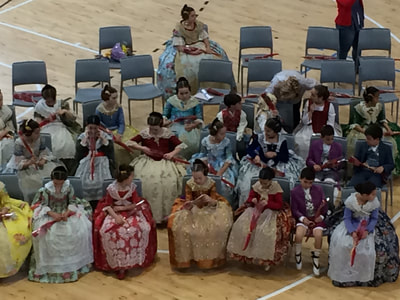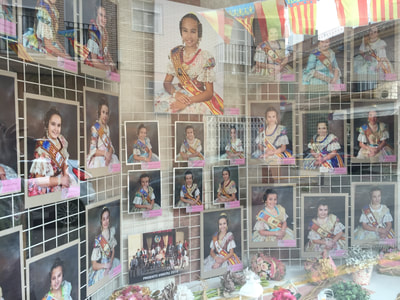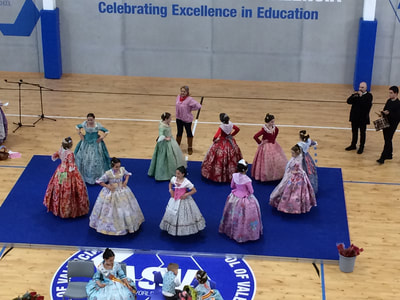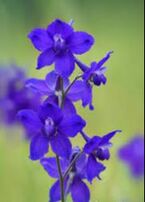|
Yesterday's Las Fallas activities switched over to a different view into Spanish culture through a celebration of community and tradition called The Gift of the Flowers. It was a reminder to me to pause and recognize the moment. I felt like I could be living in the pages of a National Geographic article. But, after living here for almost a year, it changes your perspective when you know people who are participating. It reminds you that the people you see aren't just symbols of the past, but lead regular modern lives, while consciously keeping their traditions alive. 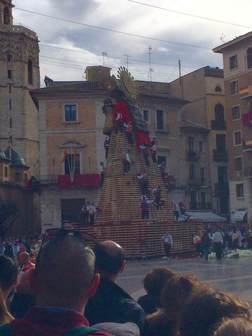 Before Las Fallas morphed into a giant celebration of fire and noise, it was also about community, especially during the time of Franco, where communities banded together to maintain some sense of independence. There are three uses of the word "Fallas." One is the name of the actual festival, Las Fallas. The second is the name of the giant structures that are made to be burned on the final night. The big ones are called Fallas. And, the third is the name of the neighborhood collectives that participate in Las Fallas. These are called Fallas Communities. There are over 350 Fallas Communities in Valencia and the festival of Las Fallas provides them a chance to remain active and preserved. On the 17th and 18th of March, these communities are on display in all their glory. In the Plaza de la Virgin in Valancia, a massive wooden silhouette has been constructed of the Virgin. A procession begins at 4:00 pm on both of these days through the streets of Valencia, consisting of miles and miles of all the Fallas Communities, dressed in their best traditional costumes and carrying flowers. The procession culminates at the construction of the Virgin, where men are arranged on the structure to fill it with the flower offerings. 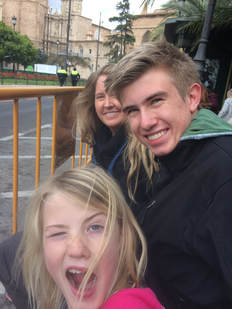 The procession lasts from 4:00 pm until 1:00 am on both days. Thousands of participants fill the closed off streets. The women, called Falleras, and men, called Falleros, walk in formation. There are groups of children and even babies dressed in traditional costume. Each Fallas Community may also have a marching band or other traditional Spanish musicians with them. I cannot stress enough, the awe an outsider feels of seeing this ongoing procession coming down the street, lasting for 9 hours straight. Each community elects a Fallas court, with a Fallera Mejor. It is a great honor to be chosen and the winner walks alone, with her court behind her. Plus, winners from past years walk with their year displayed across their dress. For the younger girls, it is a joyous occasion to be seen, while dressing up with friends. The present is mixed with the past as I watched teenage boys goofing around, while the men told them to take it seriously. And, there were many young children that were dragging their parents or crying because of the long walk. Older women were sometimes crying because of the emotion this event brings. After the flowers are presented, you see many families taking pictures of their children, just like you would after any major event in your child's life. The whole plaza smells of flowers and the beauty of the pageantry under the Basilica and Cathedral of Valencia is something I will never forget. We also got a taste of the Fallas tradition at school. On the last day before school was out, they asked any of the students that were selected as Falleras to come in their dresses. It was interesting for my daughter, Celia, to see her friends transformed into a Spanish Fallera from a culture she was not a part. The other Spanish were very proud of the Falleras and Celia told me with awe each of her friends that had been chosen. They had a big assembly honoring the Fallas court and demonstrating traditional dances. It made me appreciate, once again, the opportunity to live in a different culture. These events were not just things our kids were seeing through the eyes of a tourist, but as someone that knows the participants. For them, they can see that people are not stuck in time, but carry their traditions with them. And, although these traditions make them different, they also can be best of friends and curious about one another.
3 Comments
Sherron
3/20/2018 07:06:55 am
I can just imagine Celia taking it all in! What an amazing experience you have all had with this festival! Thanks so much for sharing through your blog - and I love the pictures too!
Reply
Pattie Shuffield
3/20/2018 07:12:24 pm
I just read your last 4 posts. What an incredible experience for you and your family. I am awed by your courage to embark on such an adventure! What memories you all will have for the rest of your lives. Hope to catch up with you when you all are back in the states.
Reply
Franci Stagi
3/24/2018 10:45:34 am
Sooo great! I’m living vicariously through you!
Reply
Leave a Reply. |
AuthorSally and her family moved to Spain for a year from July 2017 - July 2018. They lived in a little town called Puzol, which is about 20km north of Valencia. Her kids, Carson and Celia, attended the American School of Valencia, an International School located in Puzol. The goal for the whole family was to experience another way of life, and learn Spanish. Archives
May 2018
topics |
contact
|
